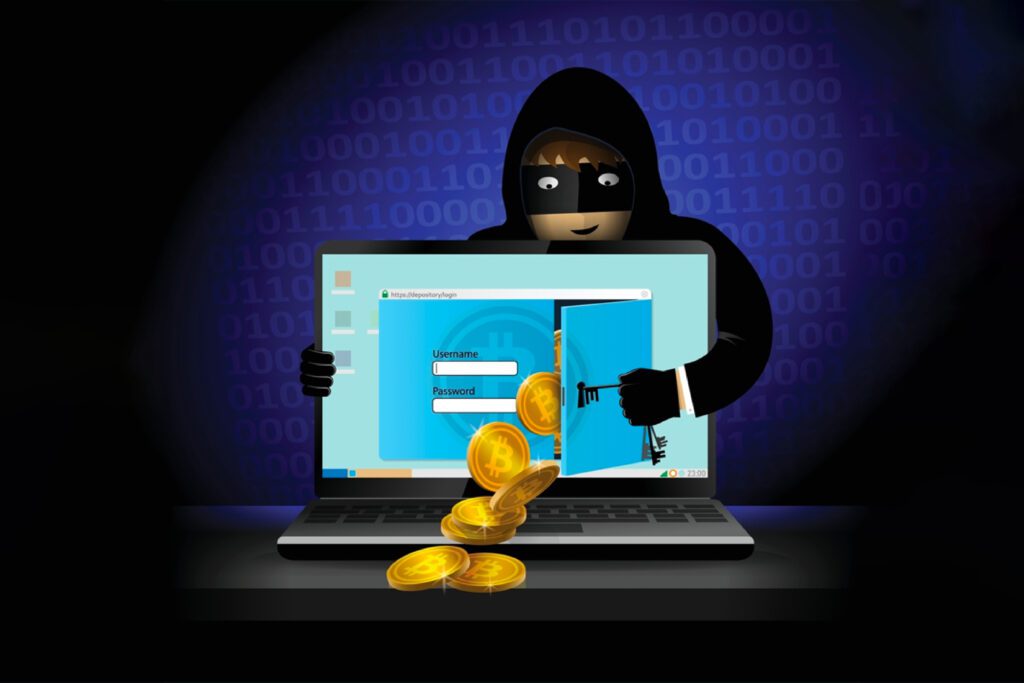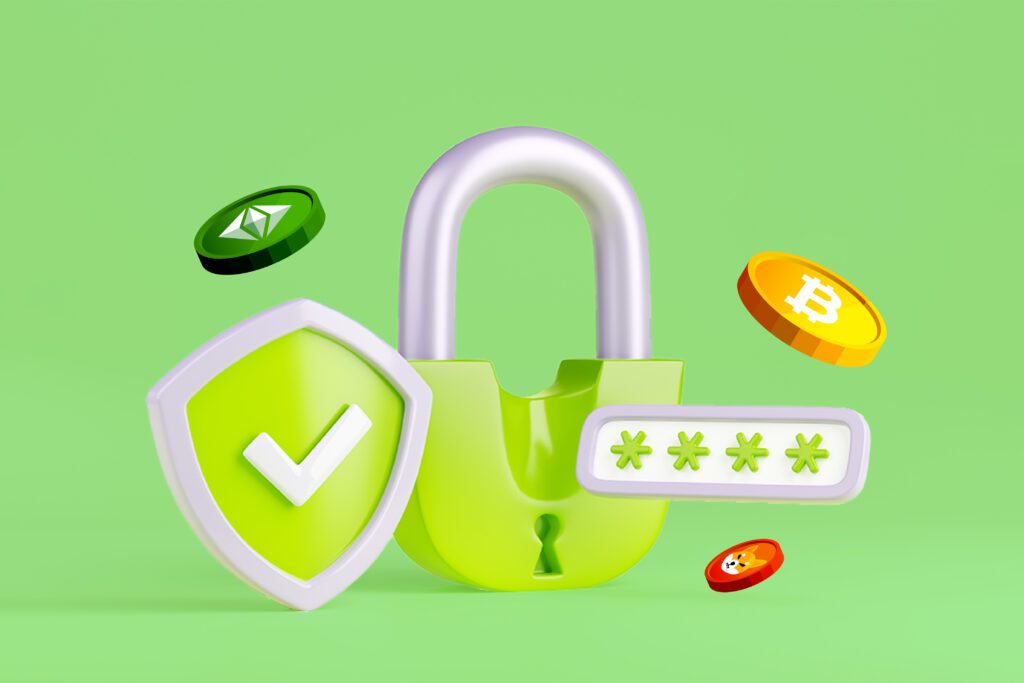It is often assumed that Bitcoin and other cryptocurrencies are fully secure because of their decentralized and anonymous nature.
However, this is not always the case. Whether through an innate vulnerability in the smart contract or even through human error, no complex system is 100% free from security vulnerabilities.
This article exposes you to the blockchain’s underlying security structure, possible vulnerabilities, and ways to protect yourself from attempts to steal your Bitcoin.
Understanding the Security of the Bitcoin Network
The Blockchain is best known as a distributed ledger technology (DLT) designed to foster trust and confidence in an environment. As such, blockchain security is generally based on three major concepts: decentralization, consensus, and cryptography. These three concepts interact with each other to ensure trust in transactions on the blockchain.
1. Decentralization
Bitcoin works on a decentralized peer-to-peer system, unlike traditional financial systems. They are decentralized because each network participant has a copy of the entire chain.
In security terms, this means there is transparency. Other participants would easily find any single node or participant that tries to edit blockchain data, and that fake block would be removed.
2. Cryptography
As a DLT, blockchain data is arranged in blocks comprising a transaction or a group of transactions. These transactions are then linked cryptographically, so tampering with the already live data is no longer possible.
Several cryptographic concepts are in use in the blockchain. The most important ones are encryption and hashing.
Hashing is a form of one-way encryption, which means there are no mathematical means to get original data from the hash of that data.
In terms of security, cryptography aids in sending data between two nodes in the blockchain securely. Its benefits to the blockchain include the prevention of double spending, reliability, and scalability of the data being transmitted.
3. Consensus
The Bitcoin network uses the Proof-of-Work (PoW) consensus mechanism. In a PoW system, validators are required to solve complex problems to add a new block to the chain. In other words, the system rewards the validators for adding complexity to the Bitcoin network. Maintaining the integrity of the network is the sole purpose of the PoW consensus.
Potential Cryptocurrency Attacks

Potential Crypto Attacks
1. 51% Attacks
In a 51% attack, the hacker finds a way to take control of the majority (51%) of a network’s computational and staking power. This attack seeks explicitly to take control of the mining process.
While, in theory, a 51% attack on the Bitcoin network is a threat, it is highly unlikely because of the high cost of acquiring the hardware for such an attack. An attacker must control ~200 EH/s of the network’s hashing power. A rather powerful miner has a hash rate of 260 TH/s. So, an attacking entity would need a million miners costing north of $8 billion.
2. Double Spending
Double spending is a possible vulnerability in blockchain networks where a single unit of digital currency can be spent more than once. Since cryptocurrency is just data, a vulnerability where a single transaction can be copied and rebroadcasted more than once is possible.
Here, a malicious attacker sends a transaction to a receiver while initiating another transaction to another address they control. To essentially spend the same coins for both transactions.
Networks that lack multiple confirmations for a transaction are usually vulnerable to double spending attacks.
3. Malware Risks and Phishing
This is the most common class of blockchain vulnerability. Malware and phishing techniques frequently steal personal data like passwords, secret phrases, and private keys.
During phishing, the attacker poses as genuine and uses fake emails or websites to convince a user to give up sensitive information. They also use malware like keyloggers created to access the user’s funds.
4. Distributed Denial of Service (DDoS)
A DDoS attack aims to flood the target network with false transactions to make it (the network) unavailable to genuine users.
Blockchain networks have a fixed number of transactions per unit of time, so any transaction that can not fit in the current block will be added to a queue called the Mempool. Transactions in the Mempool will be added to the next block. Hence, if an attacker finds a way to bombard the network with false transactions constantly, legitimate transactions will remain in the Mempool for a long time.
5. Sybil Attacks
This is an attack vector where the attacker aims to use a single node to operate many fake decentralized identities. It is usually carried out in reputable systems where the majority influences decisions on the network, such as decentralized communities and DAOs.
A Sybil attack can eventually pivot to a 51% attack when the attacker creates enough fake identities to take over more than half of the network’s total hash rate—ultimately letting the attacker modify transaction data and enable double-spending.
Historical Cryptocurrency Hacks and Security Breaches
1. Ronin Network Hack:
The Ronin hack happened in March 2022 and is known to be one of the largest in history. The attackers made away with ETH and USDC, collectively valued at around $624 million.
The Ronin Network had nine nodes to validate transactions and required only a majority of five of them to approve transactions. The attackers managed to gain control of four of those nodes and a third-party validator, which enabled them to carry out the hack quietly.
2. Poly Network Hack
The Poly Network attack was reported on the 10th of August, 2022. The attackers stole around $610 Million worth of tokens.
The attack was made possible by an access right mismanagement in Poly’s smart contracts. The attackers managed to call functions in a highly privileged smart contract that should have been modified to be contacted by only the owners, leading to unauthorized access and theft of the funds.
3. Binance BNB Bridge Hack:
The Binance Bridge hack is among the most popular cryptocurrency hacks. On the 7th of October 2022, a flaw in the IAVL Merkel proof of verification system that the BNB bridge uses led to the theft of 2 million BNB.
This hack helped highlight the importance of integrating secure code into your smart contract.
Risk Mitigation Strategies for Cryptocurrency Vulnerabilities

Risk Mitigation Strategies Against Crypto Attacks
For users:
- Make sure to use multi-factor authentication on your wallets.
- Use cold storage to hold digital currency for the long term.
If you are holding Bitcoin to sell short term, use Breet for fast transactions and competitive prices.
- Make use of biometrics in crypto wallet apps.
- Regularly update your cryptocurrency software.
For developers:
- Make sure to hold regular audits for your protocols.
- Use robust and security-minded coding practices.
Frequently Asked Questions (FAQs) About Cryptocurrency Vulnerabilities
Can a crypto exchange be hacked?
Yes. Exchanges make use of smart contracts, and smart contracts can be hacked. Hence, both centralized exchanges like Binance and decentralized exchanges can be hacked.
Has the Bitcoin network ever been hacked?
No. While, in theory, the Bitcoin network can be hacked, it has not been carried out successfully, partly because of how big the network has grown and the large amount of funds required to carry out a successful attack.
How do I protect my Bitcoin from hackers?
As a user, you can protect your Bitcoin from hackers by
- Avoid connecting your wallet to random sites.
- Store Bitcoin in a cold wallet to keep it long-term.
- Make sure to enable two-factor authentication on your wallets.
Can hacked Bitcoin be recovered?
No. Once your Bitcoin or any other cryptocurrency has been hacked, it is very unlikely that you will recover it.
Why do hackers use Bitcoin?
As with other cryptocurrencies, Bitcoin does not use a centralized authority. These features make it easier for the hacker to remain anonymous as his crypto address is not linked to any centralized ID, which helps evade authorities.
Conclusion
While Bitcoin’s network–and the entire blockchain in general–has very robust security features, it is still not 100% free from vulnerabilities.
Threats like 51% attacks, Distributed Denial of Service, and Sybil attacks have proven doable in theory and practice, as shown in historical hacks.
Remember to protect yourself from malware and phishing attacks using cold wallets, 2FA, and regular software updates.
Stay SAFU.
